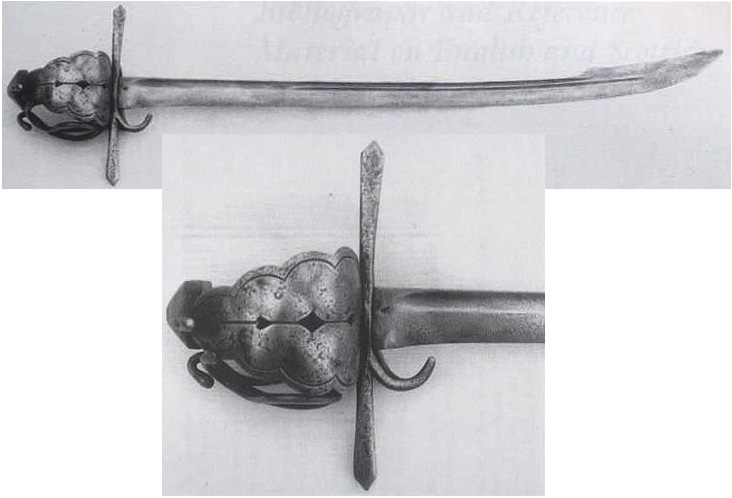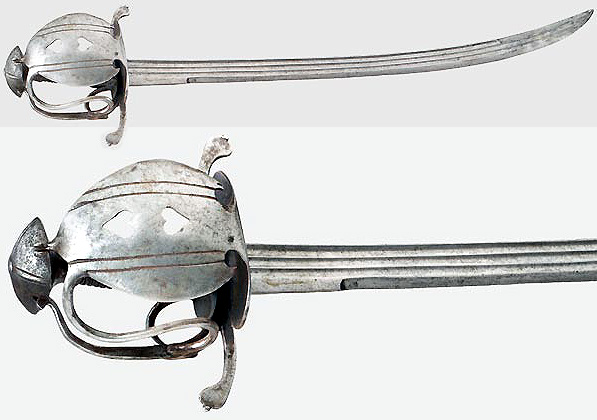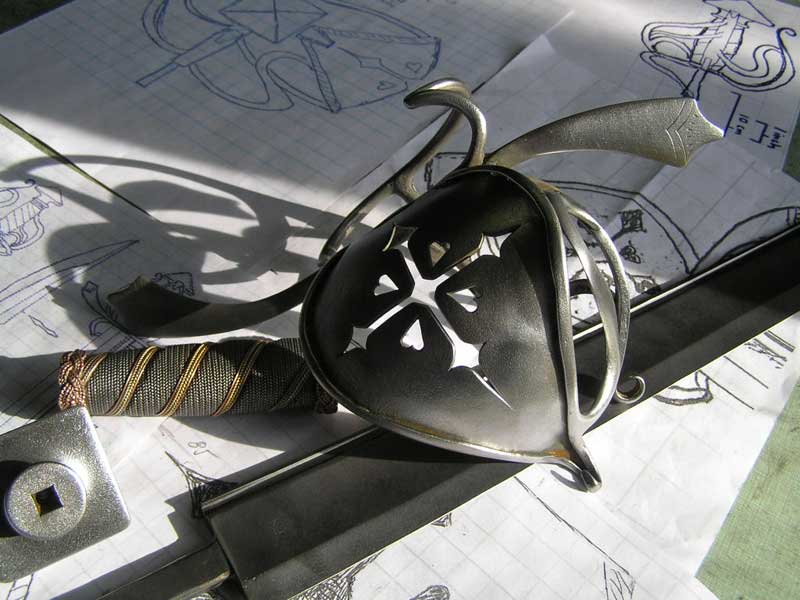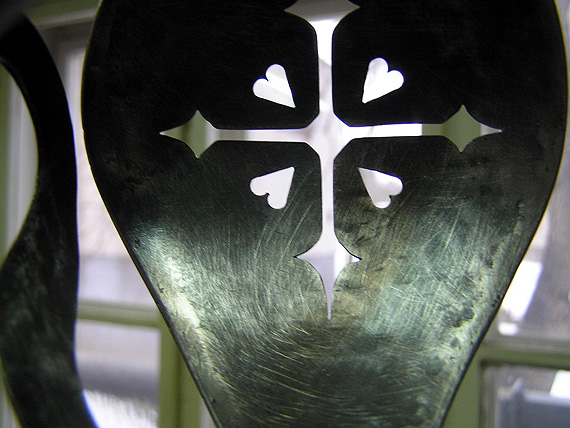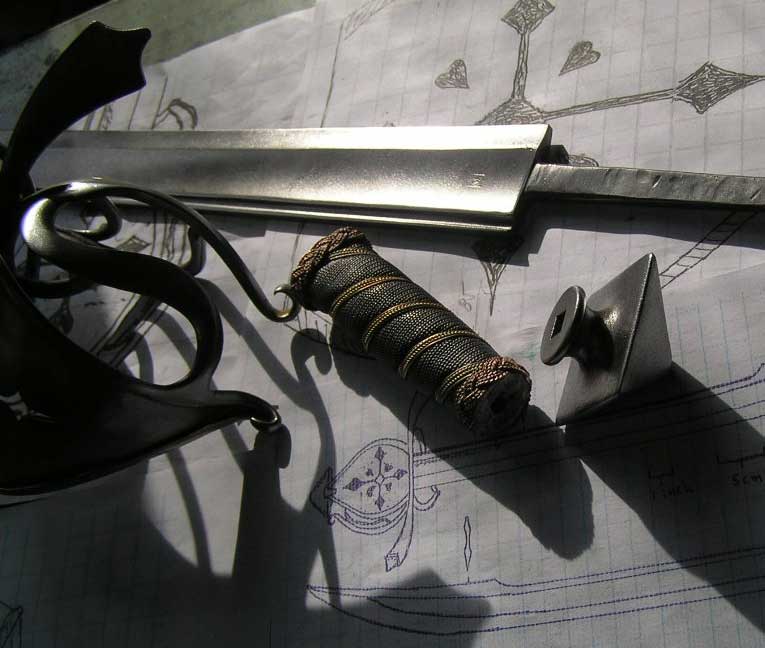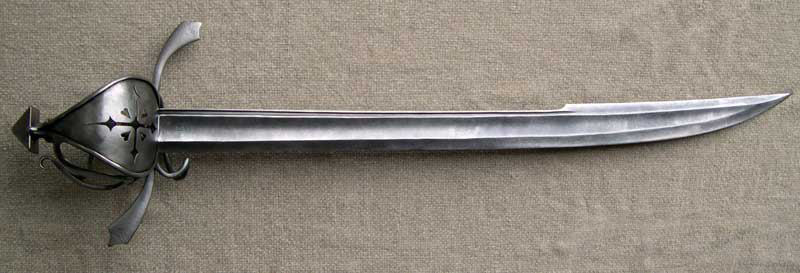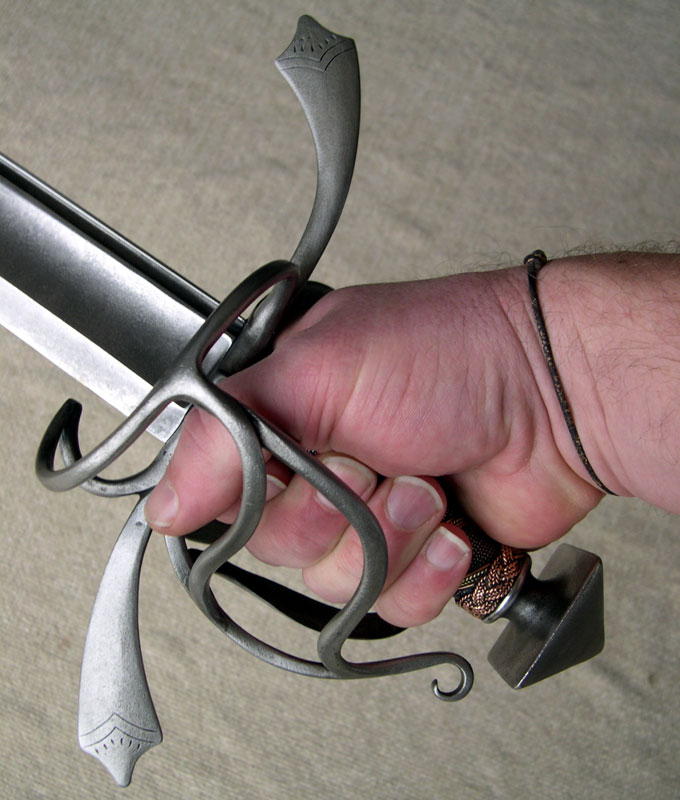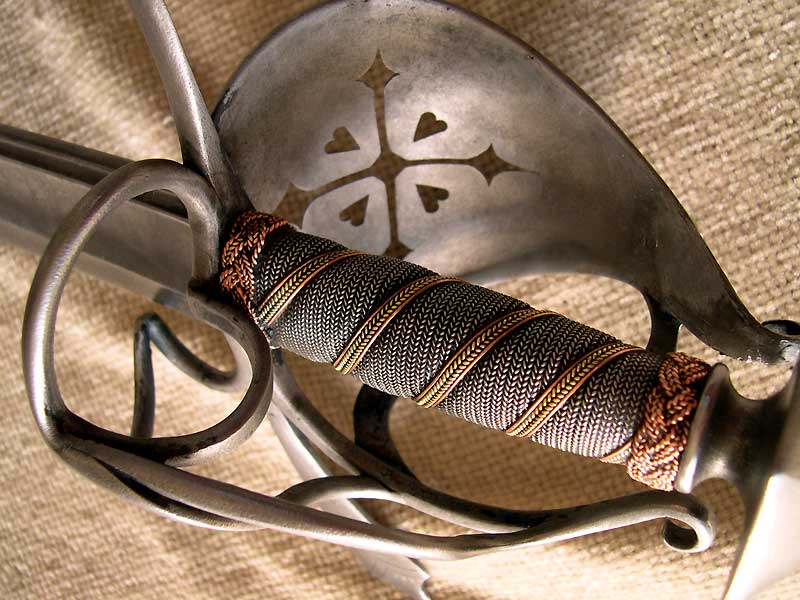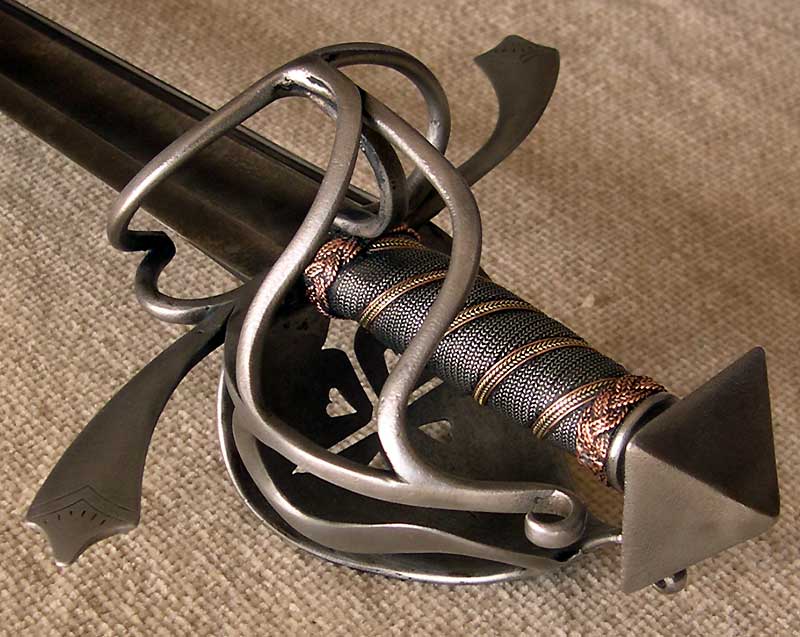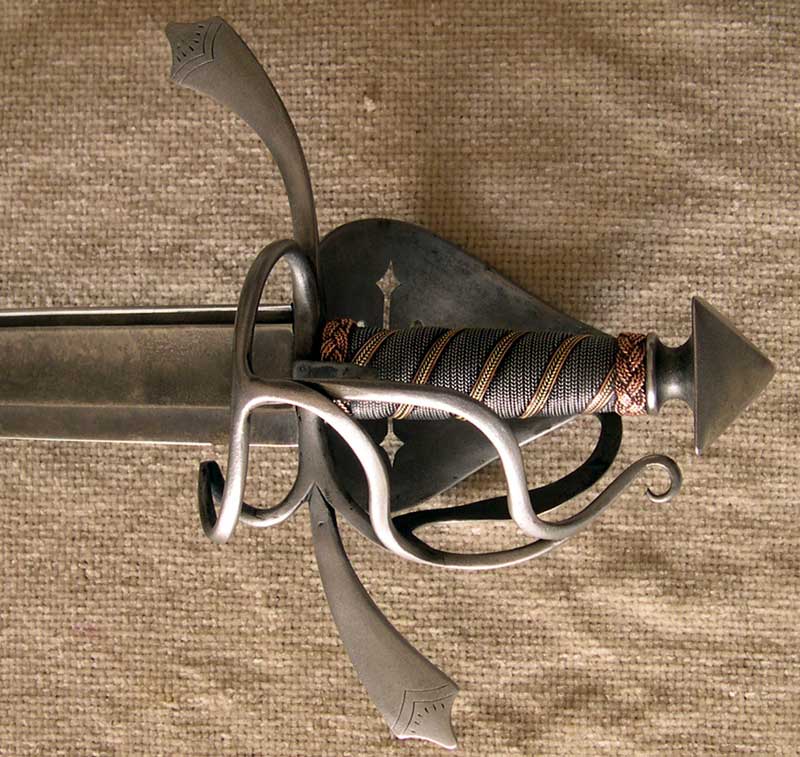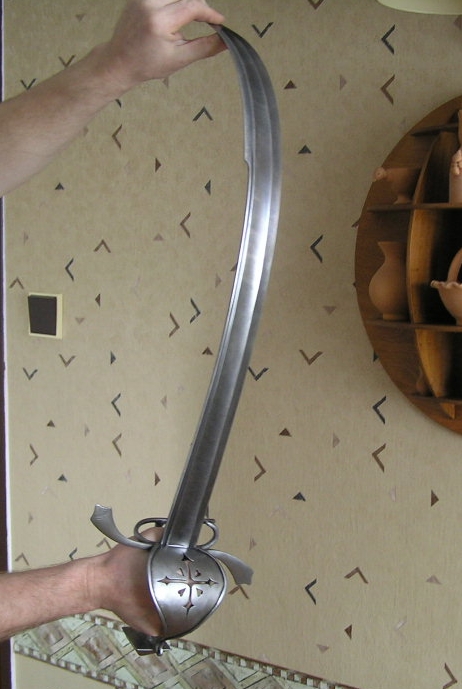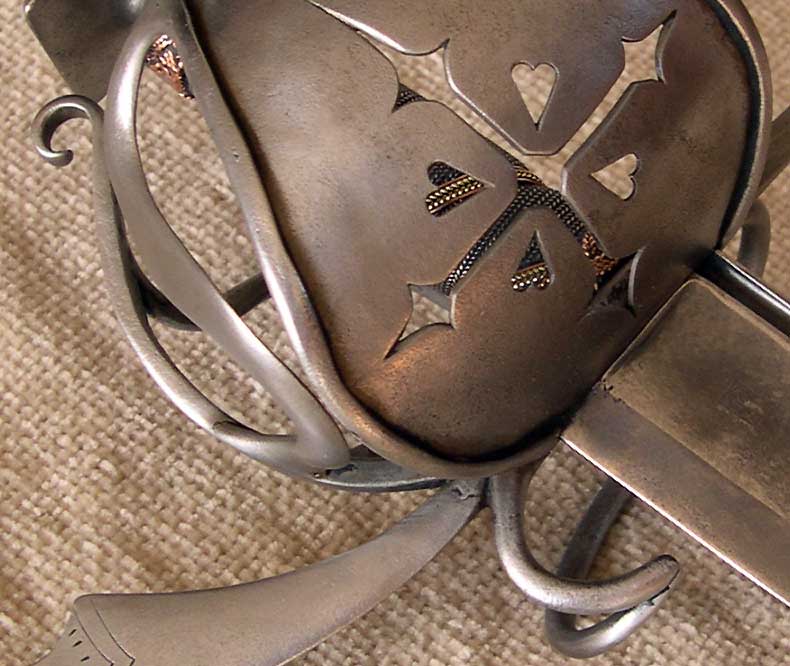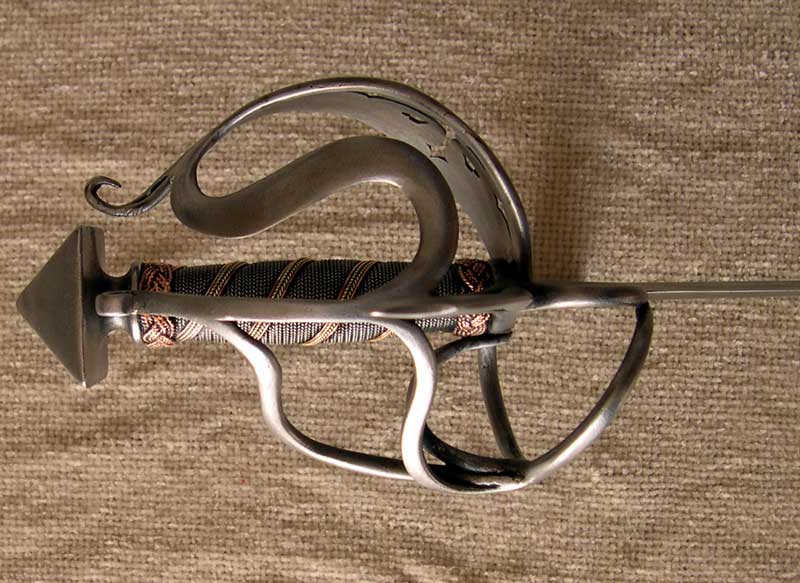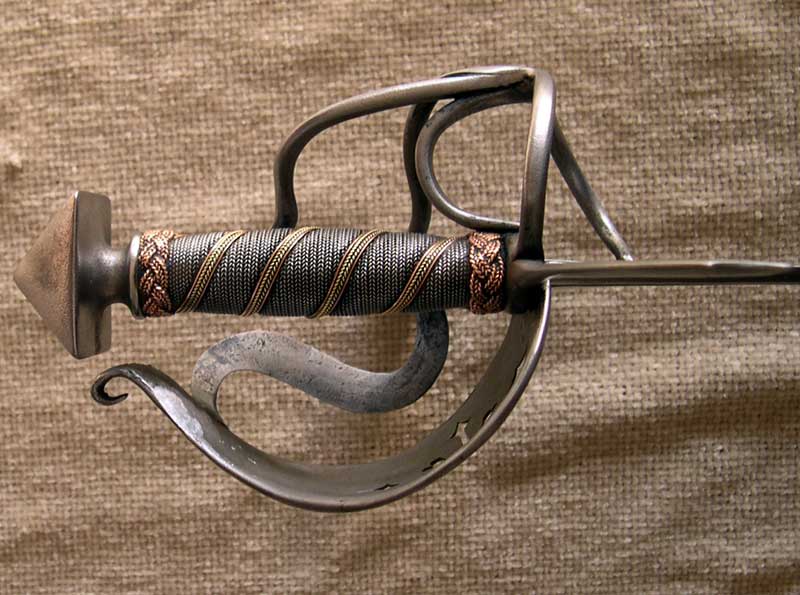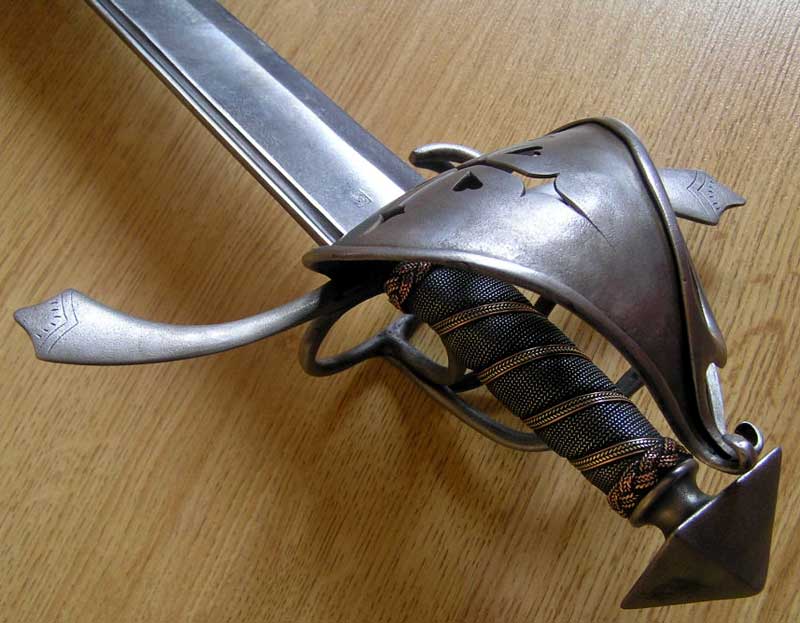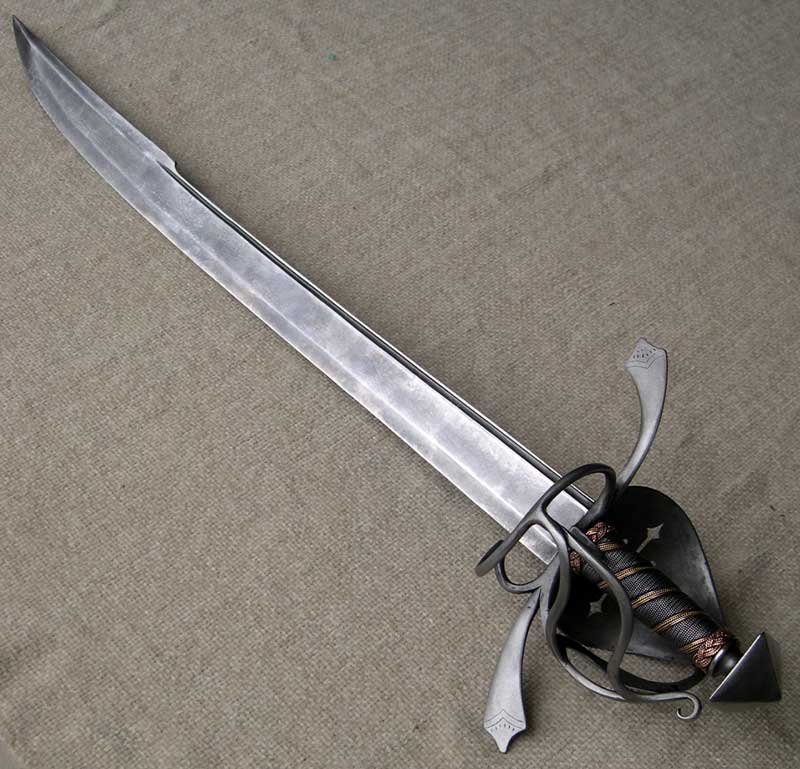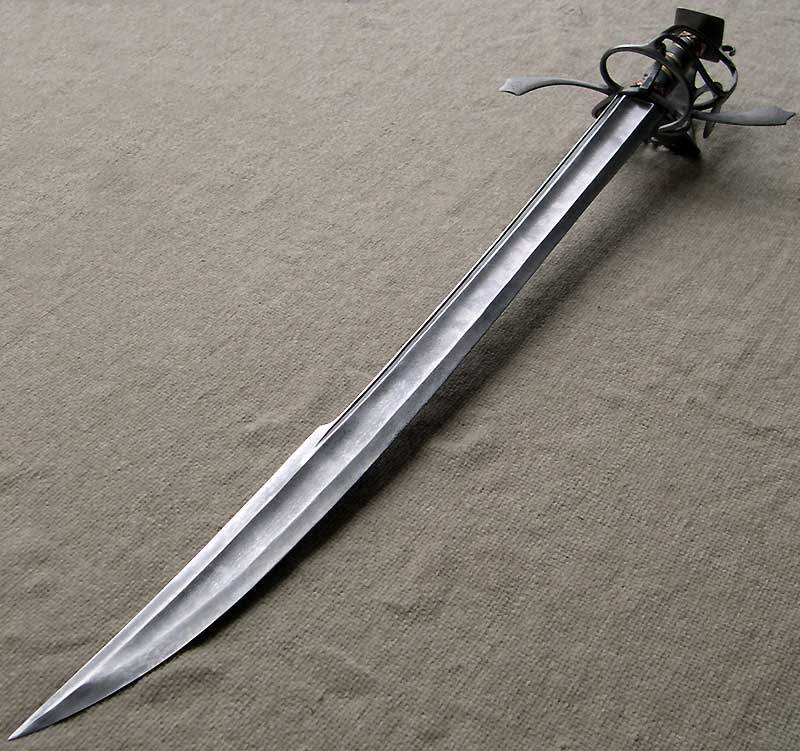I've been away for a while with work and life. However, I wanted to start a thread about a wonderful sword Vladimir Cervenka made for me many years ago. I wrote a review for the sword but never got around to publishing it. So I would like to do that now as part of this thread.
Sinclair Hilts
The late 16th century was a time when basket-hilted swords were taking shape and moving slowly toward more obvious national identities. It is during this time that a particular form emerged that sits near the center of all the new innovations in hilt design. It is called the “Sinclair” hilt. The Sinclair sword gets its name through a rather dubious set of associations. In the 19th century a number of complex hilted antique swords of German manufacture made their way into the Norwegian antiquities market. These swords had recurved quillons, pyramid shaped pommel and a large guard plate of roughly triangular shape, often pierced with diamonds, hearts or circles. Collectors were quick to notice a superficial resemblance to Scottish basket-hilted swords. In the Romantic ferment of the Victorian Age, the association of “Scottish” swords and Norway would bring to mind Lord George Sinclair and his ill-fated band of Scotsmen. In an attempted to make their way across Norway to Sweden in 1612, this company of Scotsmen were ambushed and massacred is the Valley of Kringen. Colonel George Sinclair led the company through the valley making himself and easy target. He was one of the first to fall and his name would become a symbol of the vanquished enemy to the Norwegians. So it was this name, “Sinclair,” that was attached to the Scottish looking swords appearing in the 19th century antiquities market. Yet the swords that bears the Sinclair name probably never appeared in the hands of Sinclair’s Scotsmen. English hilts and Ribbon hilts would probably be more likely candidates.
ks

Archtypical Sinclair Falchion
